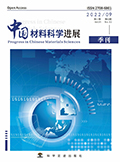

在致力于实现汽车轻量化目标的进程中, 铝合金以其出色的特性成为了不可或缺的关键材料, 但其表面性能不足, 往往需要通过改性技术提升。微弧氧化是一种极具成效的表面处理手段, 能够在铝合金表面原位生长高性能陶瓷涂层, 但其高能耗问题限制了工业化应用。本文通过调控电解液中的NaF浓度, 系统研究了其对微弧氧化放电特性、涂层结构、性能及微弧氧化能耗的影响。研究结果表明, NaF的添加显著降低了击穿电压, 单位能耗随NaF浓度增加而降低, 其中10g/L NaF体系 (MF10) 的单位能耗较未添加体系 (MF0) 减少约52. 2%。涂层形貌显示适量NaF可减小涂层孔隙, 提升致密性, 而过量NaF则会导致大孔洞和表面烧蚀。XRD分析表明, NaF促进了α-Al2O3、莫来石及AlF3相的生成。涂层性能测试显示, MF10样品的腐蚀电流密度低至2. 50×10-8A·cm-2, 且在摩擦测试中得到最小的磨痕深度。本研究为开发低能耗、高性能的铝合金MAO工艺提供了理论依据与技术参考。
In the process of achieving the goal of automotive lightweighting, aluminum alloy has become an indispensable key material with its excellent characteristics, but their insufficient surface properties often require enhancement through technology modification. Micro-arc oxidation (MAO) , as an effective surface treatment technique, can in situ grow high-performance ceramic coatings on aluminum alloy surfaces. However, the high energy consumption limits its industrial application. In this paper, by regulating the NaF concentration in the electrolyte, the effects on the MAO discharge characteristics, coating structure and performance, and MAO energy consumption were systematically investigated. The results showed that the addition of NaF significantly reduced the breakdown voltage, and the unit energy consumption decreased with the increase of NaF concentration, in which the unit energy consumption of the 10g/L NaF system (MF10) was reduced by about 52. 2% compared with that of the unadded system (MF0) . The coating morphology showed that the moderate amount of NaF could reduce the coating pores and enhance the densification, while the excessive amount of NaF led to large pores and surface ablation. XRD analysis showed that NaF promoted the generation of α-Al2O3, mullite, and AlF3 phases. Coating performance tests showed that the corrosion current density of the MF10 samples was as low as 2. 50×10-8 A·cm-2 and the minimum abrasion depth was obtained in friction tests. This study provides a theoretical basis and technical reference for the development of a low-energy and high-performance MAO process for aluminum alloys.